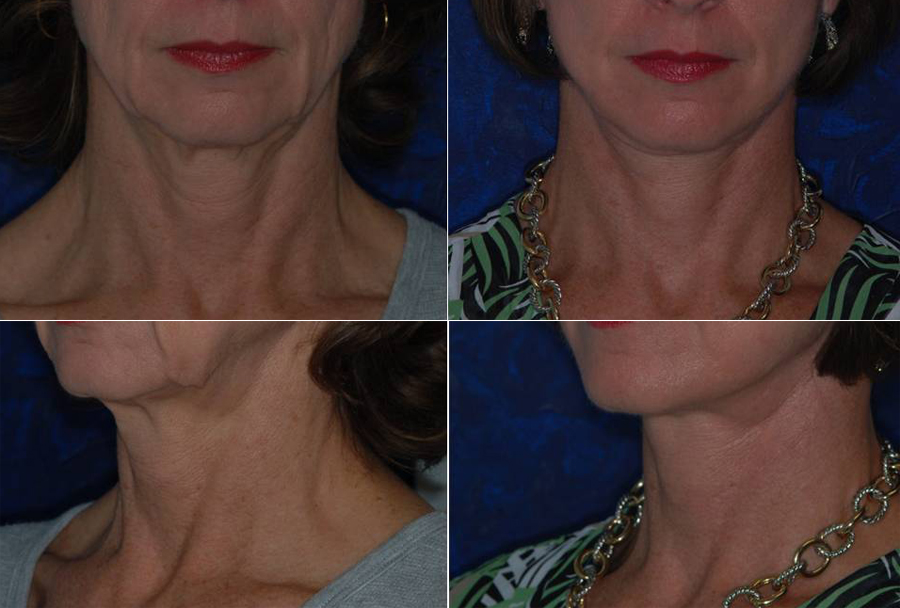
Facelift
Aging of the face is inevitable. As the years go by, the skin begins to loosen on the face and neck. Crow’s feet appear at the corners of the eyes. Fine forehead lines become creases and then, gradually, deeper folds. The jawline softens into jowls, and beneath the chin, another chin or vertical folds appear at the front of the neck. Heredity, personal habits, the pull of gravity, and sun exposure contribute to the aging of the face. As the aging population grows, it is obvious why rhytidectomy, or facelift, has become the third most desired facial plastic surgical procedure.
If you ever wondered how a rhytidectomy, or facelift in Dallas, as it is commonly called, could improve your looks or self-confidence, you need to know how a facelift is performed and what you can expect from this procedure.
IS A FACELIFT FOR YOU?
As with all facial plastic surgery, good health and realistic expectations are prerequisites. Understanding the limitations of rhytidectomy is crucial and psychological stability is vital. There is no ideal in a facelift. Rather, the goal is to improve the overall facial appearance. Skin type, ethnic background, degree of skin elasticity, individual healing, basic bone structure, as well as a realistic attitude are factors that should be discussed prior to surgery. This procedure is sometimes performed on patients in their thirties, and successful surgery has been performed on patients in their eighties. A facelift cannot stop aging, nor can it turn back the clock. What it can do is help your face look its best and give you a look of health and a more youthful appearance. A side benefit is that many patients experience increased self-confidence.
Before deciding on a facelift, you should discuss with Dallas based facial plastic surgeon Dr. Verretwhether the overall effect will be more successful if additional changes are made in the chin and neck areas through other facial surgery. Many patients decide to have facial liposuction to remove excess fatty deposits in conjunction with a facelift. If several flaws need correction, more than one procedure may be necessary for the best overall result.
MAKING THE DECISION FOR A COSMETIC SURGERY PROCEDURE
Your choice of a qualified facial plastic surgeon is of paramount importance. During the preliminary consultation, Dr. Verret will examine the structure of your face, skin texture, color, and elasticity. Photographs will be taken so that he can study your face. Individual risks will also be examined, especially those related to medical situations such as high blood pressure, a tendency to scar, smoking, and any deficiency in blood clotting. Dr. Verret will take a thorough medical history, as well as assess your mental and emotional attitudes toward the surgery. Because a realistic attitude is crucial to the success of the surgery, the facelift procedure and realistic expectations will be discussed.
UNDERSTANDING FACE LIFT SURGERY
Incisions for a facelift will generally begin in the hairline in front of the ear and travel around the ear to finish either in or along the hairline behind the ear. Exact position of facelift incisions is dependent on several factors including sex of the patient, previous facial scars, and type of facelift to be performed. The skin is lifted from the deeper structures and the deeper structures are pulled up nice and tight to their more youthful position. Some fat may be removed, as well as excess skin. For men, the incision is aligned to accommodate the natural beard lines. In all cases, the incision is placed where it will fall in a natural crease of the skin for camouflage.
After trimming the excess skin, Dr. Verret closes the incisions with fine sutures and/or metal clips, which permit surgery without shaving hair from the incision site. Depending on the extent of the surgery, the process can take from two to four hours. When the procedure is performed with a combination of mild sedatives, local anesthesia, and a mild intravenous anesthesia, the patient will experience little discomfort. For more extensive facelifts, general anesthesia must be undertaken. Following the surgery,you will have a dressing to protect the entire area where the incisions have been made. Some patients will have small tubes to drain fluid and blood from under the skin. These are generally removed in the office on the day after surgery.
OTHER OPTIONS AND PROCEDURES
Sometimes, a facelift is not the only procedure available. You may be looking for a neck lift, neck liposuction, or the new neck ribbon lift procedure. For more information, be sure to consult with Dallas facial plastic surgeon Dr. D.J. Verret.
WHAT TO EXPECT AFTER FACELIFT SURGERY
Though there are few risks in facelift surgery and thousands are performed every year, some risk exists in any surgery. If you decide to proceed with surgery, Dr. Verret will go over these with you.
Recovery usually takes two to three weeks, though some patients go back to work in one week. Scars are usually not noticeable after enough time has passed for them to mature. In any case, they are easily disguised in natural skin creases, by the hair, or, in persistent cases, by makeup until total healing has occurred. Bear in mind that the aging process continues after surgery and that some relaxation of tissues will occur over the first few weeks.
Facial plastic surgery makes it possible to correct many facial flaws and signs of premature aging that can undermine self-confidence. By changing how you look, cosmetic surgery can help change how you feel about yourself.
Insurance does not generally cover face lift procedures. To determine your exact coverage, it is best to contact your insurance company.

